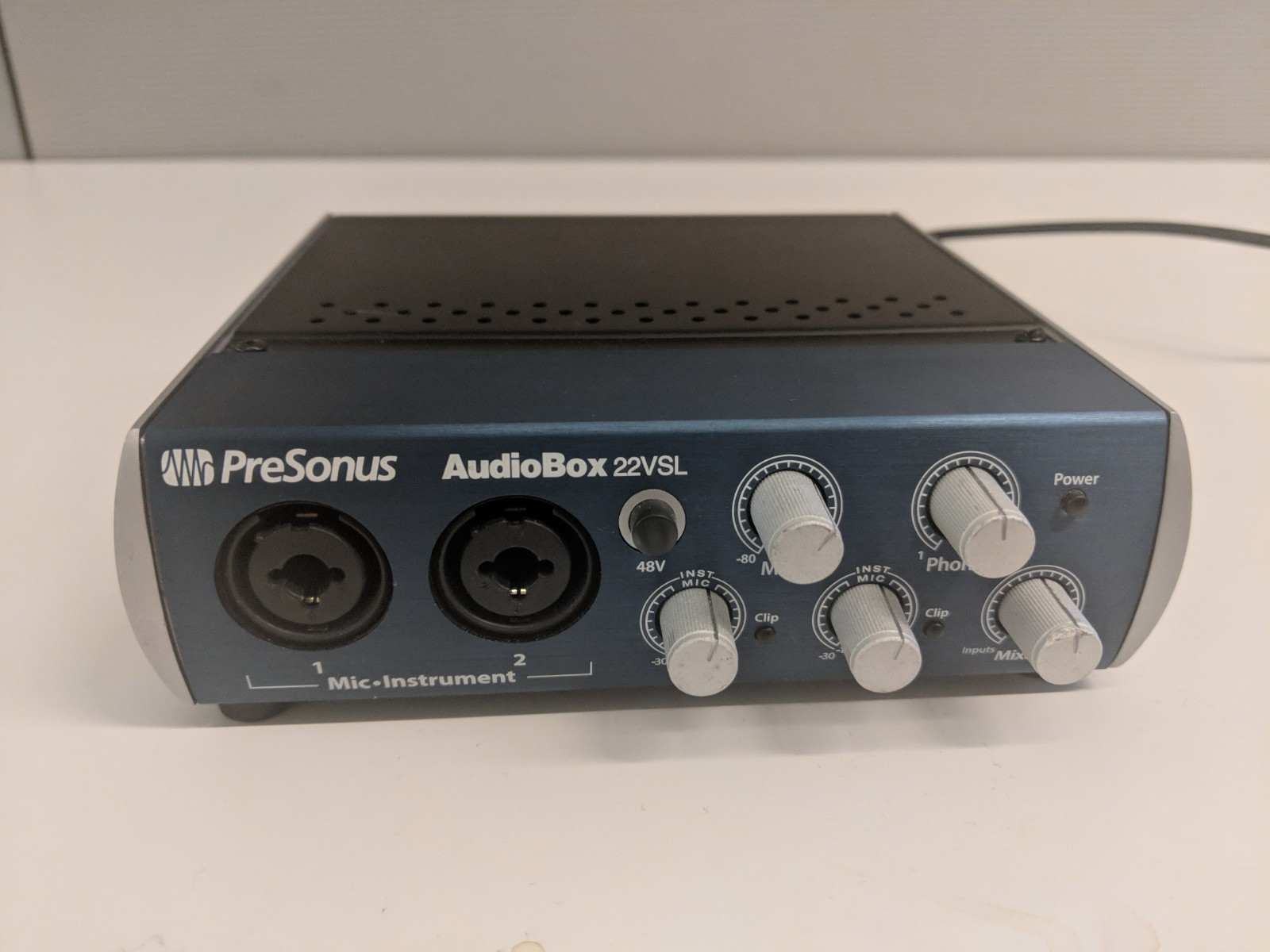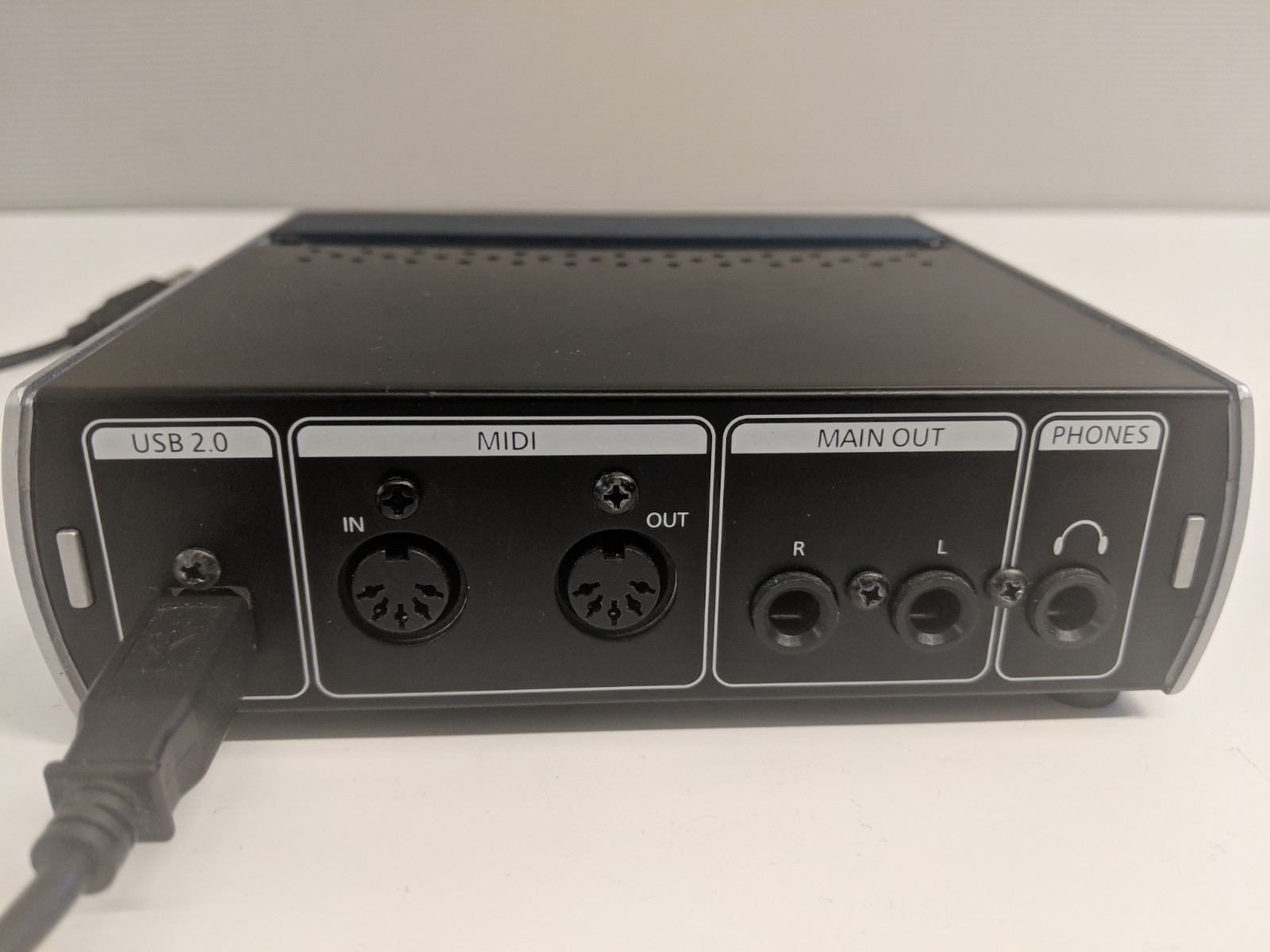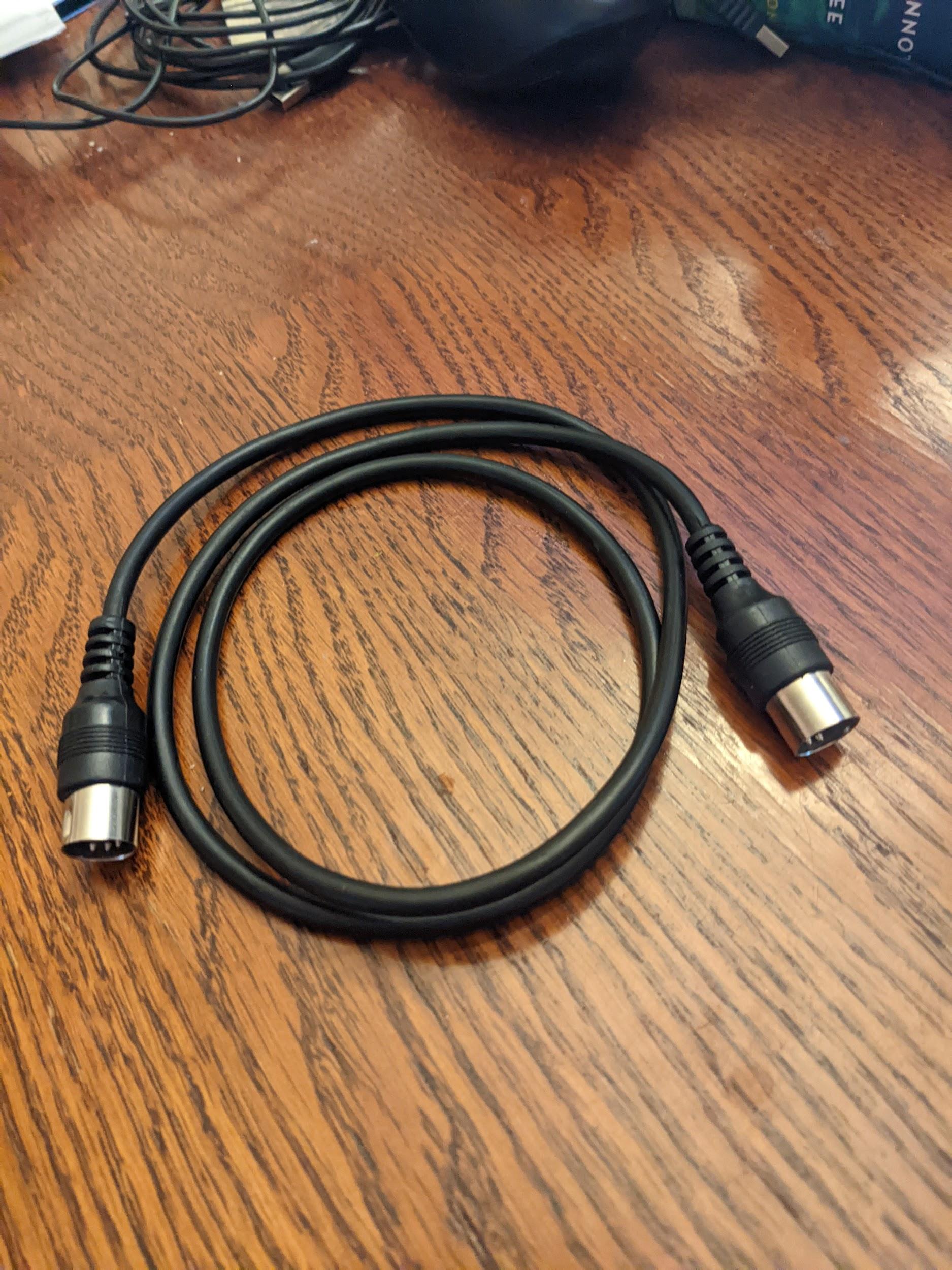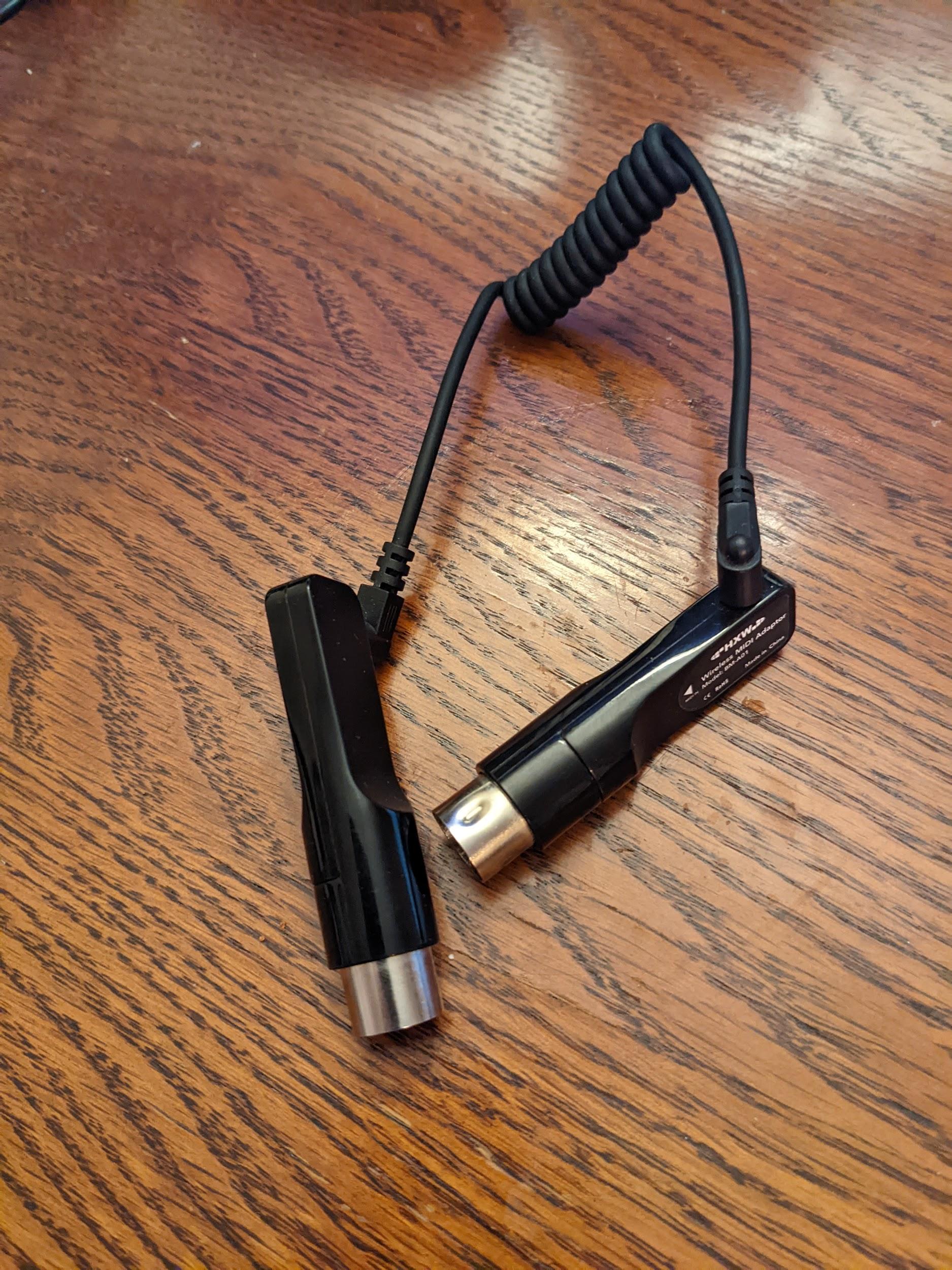以下のテストでは、電子楽器デジタル インターフェース(MIDI)システムと、関連する C または C++ API(ネイティブ MIDI テストの場合)および Java Language API(JAVA MIDI テストの場合)が想定どおりに機能することを確認します。このテストには次の要件があります。
- 必要な周辺機器: ループバック ケーブルが接続された MIDI 周辺機器
次の図に、ループバック ケーブルが接続された MIDI 周辺機器の例を示します。

図 1. MIDI I/O ポートを備えた USB オーディオ インターフェースの前面

図 2. MIDI I/O ポートを備えた USB オーディオ インターフェースの背面

図 3. 標準 5 ピン DIN MIDI ケーブル

図 4. Bluetooth MIDI インターフェース(Yamaha MD-BT01、Roland WM-1 など)
ループバック テスト
すべてのループバック テストでは、一連の MIDI メッセージをテスト用周辺機器から送信し、そのデータをループバックしてデバイスの入力データをモニターすることで、受信したデータが送信されたデータと一致することを確認します。
以下のテストにすべて合格してから、アプリで合格とマークする必要があります。
USB MIDI ループバック テスト
- USB オーディオ / MIDI インターフェース周辺機器で、標準の 5 ピン DIN MIDI ケーブルを使用して MIDI 入力ポートと MIDI 出力ポートを接続します。
- USB オーディオ / MIDI インターフェース周辺機器を DUT(テスト対象デバイス)に接続します。接続されている周辺機器を DUT が認識すると、テスト画面にデバイス名(入力と出力)が表示され、[Test USB MIDI Interface] ボタンが有効になります。
- [Test USB MIDI Interface] をタップします。
- テストが完了するまで待ってから、テスト画面に報告された結果を確認します。
仮想 MIDI ループバック テスト
このテストに外部ハードウェアは必要ありません。
- [Test Virtual MIDI Interface] をタップします。
- テストが完了するまで待ってから、テスト画面に報告された結果を確認します。
Bluetooth MIDI ループバック テスト
- Play ストアから MIDI BLE Connect アプリをダウンロードしてインストールします。
- USB オーディオ / MIDI インターフェース周辺機器の背面にある MIDI 入力コネクタと出力コネクタに Bluetooth MIDI インターフェースを接続します。Bluetooth MIDI インターフェースのコネクタの向きは決まっています。
- Bluetooth MIDI インターフェースの入力プラグは、USB オーディオ / MIDI インターフェースの入力ジャックに接続する必要があります。
- Bluetooth MIDI インターフェースの出力プラグは、USB オーディオ / MIDI インターフェースの出力ジャックに接続する必要があります。
- USB オーディオ / MIDI インターフェース周辺機器を DUT に接続します。
- MIDI BLE Connect アプリを実行し、USB 周辺機器に接続した Bluetooth MIDI デバイスをスキャンします。この Bluetooth MIDI デバイスを選択してください。
- 接続されている周辺機器を DUT が認識すると、テスト画面にデバイス名(入力と出力)が表示され、[Bluetooth USB MIDI Interface] ボタンが有効になります。
- [Bluetooth USB MIDI Interface] をタップします。
- テストが完了するまで待ってから、テスト画面に報告された結果を確認します。
